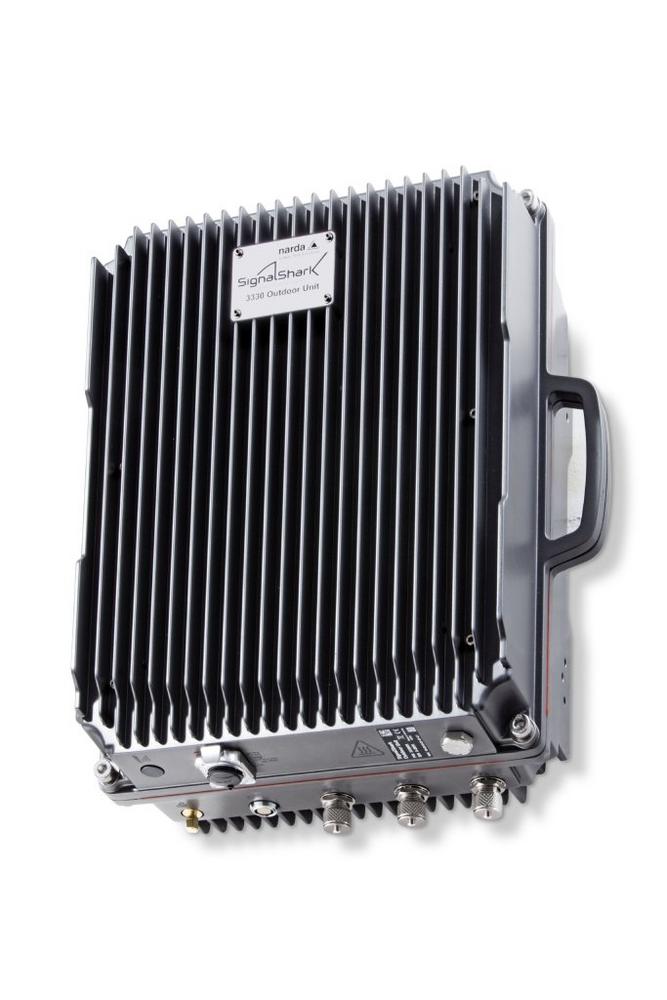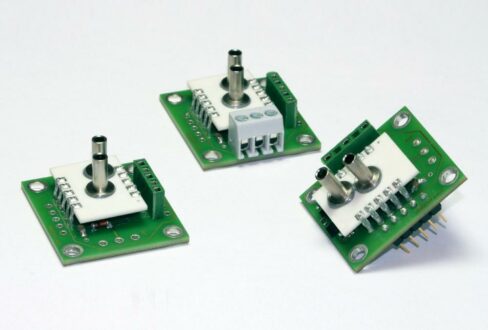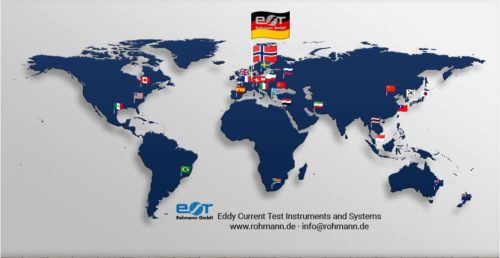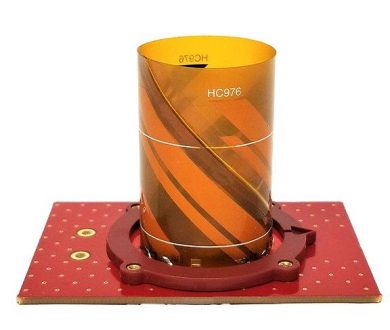
Narda’s new Outdoor Unit: SignalShark qualities for outdoor applications
Under inhospitable conditions, it detects and analyzes, classifies, and localizes RF signals between 8 kHz and 8 GHz and is the equal of its two siblings. With its real time bandwidth of 40 MHz, even the briefest and most infrequent signal events will not escape. The new Outdoor Unit operates in the open air with the same precision and reliability for which the German RF test and measurement specialist has become renowned in this field for the past more than 20 years.
Perfect for outdoor monitoring tasks
In many respects, the SignalShark Outdoor Unit is the perfect measuring unit for all applications that require long term frequency monitoring in the open air. This device is specially constructed to allow it to operate without problems within a robust, weatherproof, diecast aluminum housing that also acts as a heatsink, without any openings for ventilation being needed. This means that the instrument is hermetically sealed to comply with protection class IP65, while still allowing the heat produced by the real time analyzer and integrated Windows 10 computer to be dissipated effectively. Its operating temperature range is stated as -20 to 55 °C.
Practical applications
Narda is aiming the new Outdoor Unit of the SignalShark at all professions and users that are tasked with long term monitoring under open air conditions. This includes various authorities, including system integrators for civil and military system solutions, border protection, and the police. And, since all three SignalShark units use the identical GUI, users only have to learn how to use one device to be able to use any of the different units for all kinds of applications without any problems. For example, a police officer who detects a mobile interferer can simply switch from the SignalShark Outdoor Unit to the Handheld device and use this on the ground together with the ADFA automatic direction-finding antenna to track down and apprehend the culprit either on foot or in the patrol car.
The new Real Time Outdoor Remote Analyzer is also suitable for the latest monitoring tasks, for example, to ensure that the frequency ranges being used for the rollout of 5G services are clean, that is, free of interference or unoccupied. These frequencies in particular need specific and permanent monitoring because they have to some extent only recently been officially released or they may be located immediately adjacent to terrestrial broadcasters such as TV transmitters. The latter pose a not inconsiderable threat of interference at frequencies around the 700 MHz mark. The Outdoor Unit is also very compact, weighing just 13 kg, which is a considerable advantage that makes the test engineer’s job easy when it comes to mounting it in its most usual location, high up on a tower where it has a clear “view” all round.
Unbeatable dynamic range
The dynamic range, which is one of the SignalShark’s strongest features, makes it clear just how amazing the new Outdoor Unit created by the Narda engineers is. When test engineers are tracking down interference, they are usually dealing with very weak signals, very low levels. The device needs to have high sensitivity just to detect such signals. This can be fully exploited with the Outdoor Unit, as it can be fitted directly beneath the antennas, keeping the cables extremely short. This gives you additional dB in sensitivity, since every meter of cable increases the losses.
On the other hand, the SignalShark Outdoor Unit is extremely resilient to large signals and is not easily overmodulated even when it is surrounded by signals with very high levels. This is a huge advantage for users that allows them to operate the Outdoor Unit directly on transmitter towers without needing to change their infrastructure. The instrument can handle very high field strengths, even partially within the lobe of a transmitting antenna, and still cleanly capture even weak interference signals. The outstanding dynamic properties of the SignalShark have already been confirmed by several national regulatory authorities and highlighted as an important criterion for its practical use. Just recently, the Outdoor Unit was tested together with a TDOA system and very favorably mentioned in an independent official report.
All the advantages of an open platform
As with all the other devices in the SignalShark range, the Outdoor Unit is also designed as an open platform. This means that it too communicates using standardized languages and uses and supports common formats that are customarily used by the scientific community. The range of expansion modules thus naturally includes non-Narda third party products. Thus additional applications from other manufacturers can be run on this Windows10-based instrument with its Intel quad-core processor, e.g. for classifying digitally modulated signals. Integration into any software environment is possible thanks to a well-documented SCPI command sequence and VITA 49 compliant I/Q data streaming.
Free choice of antennas
Apart from the LTE antenna in the Modem version, the device does not have a built in or fixed antenna. This means that the antenna can be freely selected according to the application. The Outdoor Unit is equipped with three switchable RF connections to allow connection of three different antennas for different frequency ranges or to cover different directions. If it is used in conjunction with the Narda automatic direction-finding antenna ADFA, for example, interference in the spectrum can be traced and its direction found straight away.
Even if the Outdoor Unit is “only” used with an off the shelf omnidirectional antenna, it is still possible to localize a signal. This is because the unit supports both automatic direction-finding and TDOA. TDOA software can determine the precise location from where a signal is transmitted by calculating the time when the signal was received by which antenna in a TDO network of at least three units.
Two types of power supply
Narda offers two versions of the new SignalShark model: The PoE (Power over Ethernet) Outdoor Unit uses a single Ethernet cable for data communication and to provide its power supply as well as the supply for the automatic antenna. This simplifies connection to a building. The Modem version for stand-alone operation uses a DC supply, possibly from a solar panel, and includes a built in LTE modem for data transfer and remote control. This means that the device is 100% autonomous when there is a mobile network available during daylight. At night, the Outdoor Unit draws reliable power from the inbuilt rechargeable batteries that are charged up during the day.
Narda is a leading supplier of measuring equipment for RF Test & Measurement, EMF Safety and EMC. The RF Test & Measurement range includes analyzers and devices for the measurement and identification of RF sources. The EMF Safety product spectrum covers broadband and frequency-selective measuring devices, and EMF monitors for wide area coverage as well as personal safety monitors that can be worn on the body. The EMC sector offers instruments for determining the electromagnetic compatibility of devices under the PMM brand name. The range of services provided includes servicing, calibration, and training programs. The company operates a management system that complies with ISO 9001/2008 and ISO/IEC 17025 and maintains a calibration laboratory that is accredited to DIN EN ISO/IEC 17025:2018.
Narda has development and production facilities in Pfullingen / Germany and Cisano / Italy, and has its own representative in Beijing / China. A worldwide network of representatives guarantees closeness to customers.
Narda is part of L3Harris Technologies.
Narda Safety Test Solutions GmbH
Sandwiesenstr. 7
72793 Pfullingen
Telefon: +49 (7121) 9732-0
Telefax: +49 (7121) 9732-790
http://www.narda-sts.com
Redakteur|Inhaber
Telefon: +49 (7522) 9899850
E-Mail: thomas.jungmann@texterei-jungmann.de
![]()





